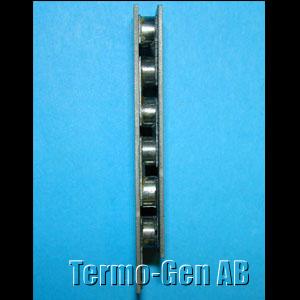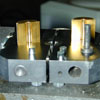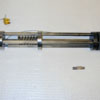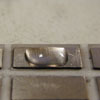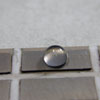EU Project | 2001-2004
Participants
From the "Nanothermel Final Technical Report":
Summary
The overall goal for this project is to develop nanoengineered high performance thermoelectric materials and devices for advanced applications. Two approaches have been adopted: Nanostructuring and Molecular Engineering, both have been verified and proven to be advantageously feasible to reach the goal.
- Successful theoretical studies on design and selection of composition and structure for enhancement of ZT of the TE systems have been performed for three categories of the compounds, namely skutterudites, zinc antimonides and clathrates. Selected structures have been proposed based on the calculation results. Optimal composition for several TE materials has been recommended. Theoretical modeling of the electronic transport properties of TE compounds have been optimized in comparison with the experimental observations to guide the optimization of the materials toward the maximization of ZT.
- Basic strategy of nanostructuring TE materials for better performance has been successfully carried out. Thermal conductivity has been significantly reduced; about 5-10 times lower than that of corresponding micron-sized materials, thus resulting in highly enhanced Figure of Merit (ZT),
- Chemical alloying routes have been developed and optimized for the synthesis of nanostructured and (Ni, Fe, or Te) doped skutterudites, resulting in several-fold enhancement of ZT compared to the literature data for the corresponding compounds. With a combined doping of Ni and Te, a record high ZT of 0.65 at 700 K has been obtained for the n-type TE materials in comparison to the literature data for doped but unfilled skutterudites, and it is expected to reach ZT > 1 at 900 K.
- Polycrystalline powders of zinc antimonide have been synthesized by quenching of stoichiometric melts of pure metals. The optimization of the zone refinement procedures has been carried out, leading to single crystal samples of p-type TE materials with higher purity and homogeneity than reported in literature, and a comparable ZT value of 0.7 at 600 K. With addition of excess Zn, ZT has been further enhanced to 0.85 at 600 K and ~1 at 700 K. A patent application is prepared.
- Single crystal of n-type clathrate BaGaGe has been pulled by Czochralski method, resulting in a record high ZT of 1.2 at 900 K, compared to the literature data, for undoped clathrates. A patent application is prepared.
- Compaction of prepared skutterudite materials has been studied in detail and optimum conditions have been selected to maximize the ZT.
- Compaction of prepared zinc antimonide material has been studied in detail and optimum conditions have been selected to maximize the ZT.
- A standardization programme has been established to ensure accurate and reproducible TE measurements for reliable evaluation of the materials produced. This involved both absolute standardisation and relative (round-robin testing) standardisation of measurements of Seebeck coefficient, thermal conductivity, electrical conductivity and other transport properties.
- Two prototype devices for current generation and cooling have been fabricated from materials developed during this project. This included the manufacture of TE elements that are assembled to TE-modules and involved the development of methods for processing, compacting and bonding TE-materials and metal-semi-conducting materials interface, and novel sintering techniques.
SME partners have been actively participating into the project for the exploitation of materials and processing technology developed within this project for the development of cooling and electrical generation systems.
Participants
- Kungliga Tekniska Högskolan, Royal Institute of Technology – Stockholm, Sweden
- University of Åårhus – Åårhus, Denmark
- Chalmers Tekniska Högskola, Chalmers University of Technology – Gothenburg, Sweden
- Consiglio Nazionale delle Ricerche – Milan, Italy
- NEDO Centre for Thermoelectric Engineering – Cardiff, UK
- German Aerospace Centre – Colonge, Germany
- CIDETE Ingenieros – Barcelona Spain
- LEGIND - Termo-Gen AB (Legelab), Automotive Technologies, ATAB, and S T Engineering, STE
All contents belong to Termo-Gen AB (© 2008) unless otherwise stated and may not be used without permission
E-mail: info@termo-gen.se | Webmaster: info@termo-gen.com
